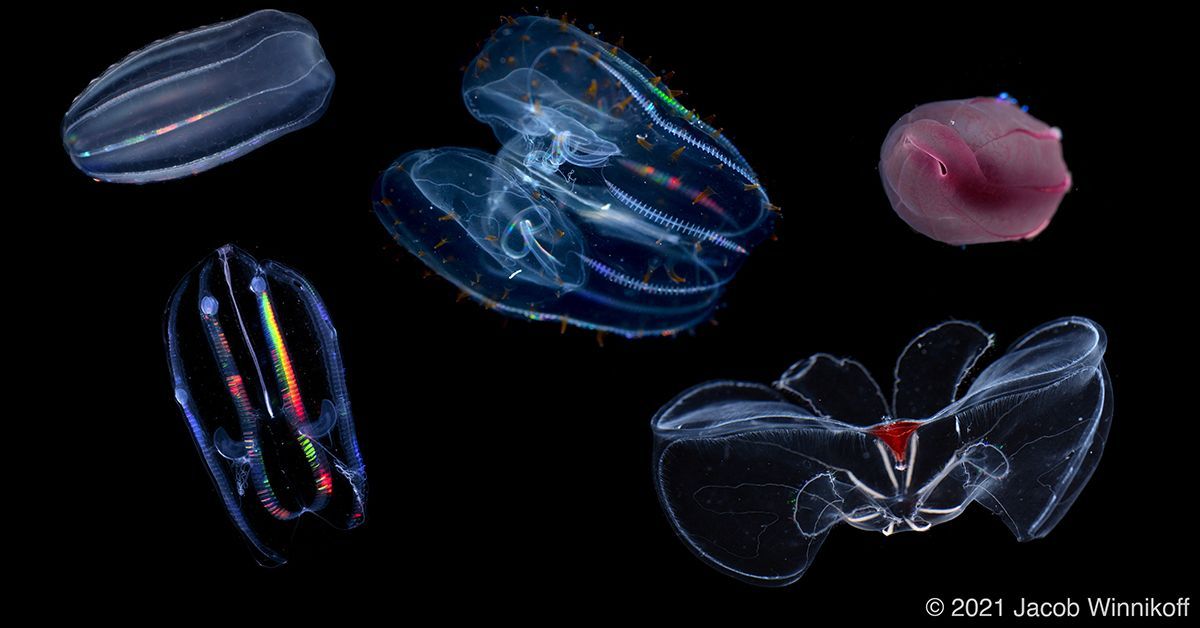2024-06-27 カリフォルニア大学サンディエゴ校(UCSD)

A collage featuring five of the comb jelly species studied. Red coloration as seen in the two specimens at right is common among deep-sea animals. (cr: 2021 Jacob Winnikoff)
<関連情報>
- https://today.ucsd.edu/story/comb-jellies-under-pressure
- https://www.science.org/doi/10.1126/science.adm7607
深海無脊椎動物における圧力に対するリン脂質のホメオ適応 Homeocurvature adaptation of phospholipids to pressure in deep-sea invertebrates
JACOB R. WINNIKOFF, DANIEL MILSHTEYN, SASIRI J. VARGAS-URBANO, MIGUEL A. PEDRAZA-JOYA, […], AND ITAY BUDIN
Science Published:27 Jun 2024
DOI:https://doi.org/10.1126/science.adm7607
Editor’s summary
Extreme pressures thousands of feet deep in the ocean are sufficient to compress the conformation of the molecules that form biological membranes. Winnikoff et al. explored how comb jellies have adapted to such pressures. Sampling revealed that jellies from deep environments have abundant phospholipids that show negative curvature at low pressure but allow the formation of functional membranes at high pressure. Increasing the expression of such lipids in the bacteria Escherichia coli was sufficient to enhance pressure tolerance in those cells. —L. Bryan Ray
Abstract
Hydrostatic pressure increases with depth in the ocean, but little is known about the molecular bases of biological pressure tolerance. We describe a mode of pressure adaptation in comb jellies (ctenophores) that also constrains these animals’ depth range. Structural analysis of deep-sea ctenophore lipids shows that they form a nonbilayer phase at pressures under which the phase is not typically stable. Lipidomics and all-atom simulations identified phospholipids with strong negative spontaneous curvature, including plasmalogens, as a hallmark of deep-adapted membranes that causes this phase behavior. Synthesis of plasmalogens enhanced pressure tolerance in Escherichia coli, whereas low-curvature lipids had the opposite effect. Imaging of ctenophore tissues indicated that the disintegration of deep-sea animals when decompressed could be driven by a phase transition in their phospholipid membranes.


